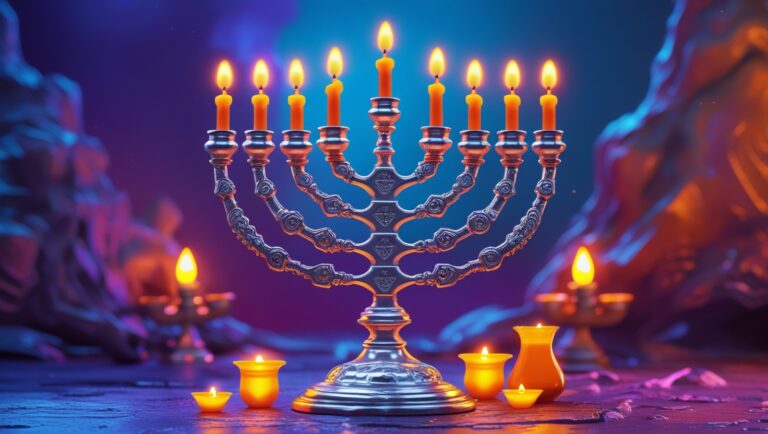While it’s often difficult to ascertain the veracity of the stories of the Baal Shem Tov, there are a few profound teachings we can glean from them
To be very clear: I’m very skeptical. Despite being Breslov and considering myself in the Charedi group, I tend to be dismissive of most Chassidic stories out there. It’s not that the protagonists of the stories are not righteous, but rather the people telling them usually are not. Sometimes stories are “exaggerated” to try to “awe” the listener. Sometimes they are not told properly like when someone is drunk. And sometimes, I believe, they are just invented.
A few exceptions in the world of Chassidut include those of Rebbe Nachman, those from the book Shivchey HaBaal Shem Tov (the “praises of the Baal Shem Tov”) and those of Rav Berland (though they may need some interpretation). Besides, of course, the Sephardi Mekubalim like the Arizal, Rav Chaim Vital, Rabbi Shalom Sharabi, the Chidah, the Ben Ish Chai and so on. These are in my mind, undoubtedly, all real.
Yes, other stories may or may not have happened and perhaps we will never know the truth. But even stories of the Talmud are “corrected” in order to clarify some matter that “doesn’t make sense”. That doesn’t mean they are fake, but just that some explanation is in order to understand it fully.
The power of stories to purify the mind
This Shabbat I went back to read Rebbe Nachman’s Torah 234 on Likutey Moharan. Rebbe Nachman speaks about the power of telling stories of Tzadikim to purify the mind. However, a person needs to be on a high level to be able to tell these stories since the exact same feats the Tzadik performed were once also performed by Reshaim.
For example, Pinchas used the holy name of Hashem to fly, but Bilaam did the same with names of Tumah. Moshe turned the waters of Egypt into blood by holy means, but Pharoh’s magicians did the same. And so on.
Being on a certain level enables one to differentiate between the feats of Tzadikim (which are called light) and the feats of Reshaim (which are called darkness). If a person doesn’t have this level, then he should be a person of Emunah who can then “know without knowing” who’s a Tzadik and who’s a Rasha.
Having a strong Emunah will safeguard one against thinking that a Rasha is actually a Tzadik and vice-versa. Another reason why one needs a certain level of wisdom and/or Emunah is that stories also need to be accurately told in order for their power to be manifested.
Once a story is told, Rebbe Nachman teaches, then it creates certain vessels of blessings to the individual telling, besides establishing and strengthening a connection between him and the Tzadik. Conversely, the same happens when one tells the story of a Rasha, which is a pretty bad thing.
In Likutey Tinyana Torah 60, Rebbe Nachman also brings the tremendous power of ancient stories (Sippurei Ma’assiot) to awaken those that have fallen into a deep slumber and lost the 70 faces of Torah. See this article on the story about Choni HaMeagel.
Stories carry the advantage of conveying deep truths in a simple way that can be absorbed. Some concepts are often so exalted that the minds of people cannot receive them. Stories then clothe these ideas in easy-to-digest tales that also fool the Sitra Achra, even if the listener does not understand what is being conveyed.
The Baal Shem Tov’s well of miracles
Here’s a very deep and awesome Kabbalistic principle: all events that happened once in history leave an imprint in the spiritual worlds, which can be used by someone at a later time.
And here’s where stories come in handy to teach us the extent of what is possible to accomplish.
A certain story I read on the Baal Shem Tov goes more or less like this:
Once a certain woman came to the Maggid of Mezritch to ask that he should pray for her son who was seriously ill. The Maggid went to the woods, lit a candle, and put it inside a hollow tree trunk. Then he prayed a little and the son was saved. His students were… stumped (ok, no puns) and asked what was the whole deal with putting a candle there?
The Maggid answered: I don’t know. I once saw the Baal Shem Tov do it. But I don’t know his kavanot or prayers, so I just lit it there and prayed in my own words.
Whether the story happened or not is irrelevant, though I believe it did happen. What is important is that it comes to teach a very important principle of Creation: events cause impressions (reshimu) and open up wells of miracles that can be used at a later time in history. The Maggid humbly said he just “copied” the Baal Shem Tov’s motions and this caused the son to be healed.
Rabbi Pinchas Ben Yair once caused a certain river to split, effectively bringing about the famous miracle that Moshe Rabbenu did for the Hebrews, albeit on a lesser scale. Similarly, the Zohar reports that Rabbi Shimon Bar Yochai reportedly ended a plague in a city by merely uttering the words “can it be that a plague and I are in the same city? Rabbi Meir Baal HaNes praised Rabbi Shimon in that, after Korach’s rebellion, Moshe Rabbenu needed to ask Aharon to bring the “cleansing incense” to sweeten the dinim that brought about the plague, while Rashbi, with a few simple words ended the plague.
Of course, no one is above Moshe Rabbenu. As we learn from Etz Chaim by Rav Chaim Vital the entirety of souls that came after him are on a much lower level. So, the greatness of these sages is derived from Moshe Rabbenu who opened up the wells of miracles for them to use.
However, thanks to Moshe Rabbenu, they were able to perform these feats with relative ease. Similarly, throughout the generations, many sages and Tzadikim performed miracles that altered reality. Miracles done through holiness which have caused an impression in the spiritual worlds. These miracles can be “reactivated” and re-used on an as-needed basis.
(Though I won’t come up with a course on “how to remove blockages from your life” for a fortune)
Besides what Rebbe Nachman taught that stories of Tzadikim can cleanse the mind, I believe this is another contribution stories of Tzadikim can give, even when we cannot ascertain whether they are real or not. The fact that they are part of people’s consciousness also has power on its own even if they never factually happened.
Other considerations
I keep saying this, but I cannot stress enough: one doesn’t need to be Yosef HaTzadik to accomplish these great feats. Belief in one’s own soul power and in Hashem’s closeness and proximity may be sufficient for many of the things we wish to accomplish.
The wells are here. They have been prepared over the ages by Tzadikim who caused a deep, holy impression in the spiritual worlds. The Etz Chaim teaches that, while the light may fade, the reshimu never leaves and is always there.
Rebbe Nachman also used to say that “Whenever I see lack, I see lack of prayer”. Prayer truly can accomplish everything and personally, I believe that for better or worse, Hashem is open to granting 99.99% of all prayers.
This may seem like an absurd claim (it’s a Chiddush of my own), but consider that Moshe Rabbenu was almost granted entry to Eretz Yisrael. Think about this for a while: one more prayer and he’d have built the Third Temple, become Mashiach, and Creation as we know would’ve ended. If even this otherworldly event could’ve technically come to fruition had Moshe Rabbenu not stopped praying, that means that Hashem was actually ready to grant him that.
So what about the “little” things we ask?
Who can say that Hashem is actually barring it from coming to happen?
This is, I believe, one of the ancillary benefits of remembering certain events like lighting Chanukkah candles or reading the Megillat Esther, as shown in Shaar HaKavanot: The light that was once present is re-activated and can once again be used. In that same note, on Pesach we are shedding away our spiritual slavery and ending the bread of shame.
Besides, of course, the fact that every year we need to lift up the berurim of these events that Hashem reanimates. This is part of the “agreement with God” that we all keep in one way or another.
The Baal Shem Tov’s contributions far transcend his stories. His blessings are felt in the fire of Chassidism that reanimates thousands of Jews worldwide and help them reach their divine purpose, get to the root of happiness, and open their eyes to seeing God in everything.
May the merit of the Baal Shem Tov and Rebbe Nachman protect us.







